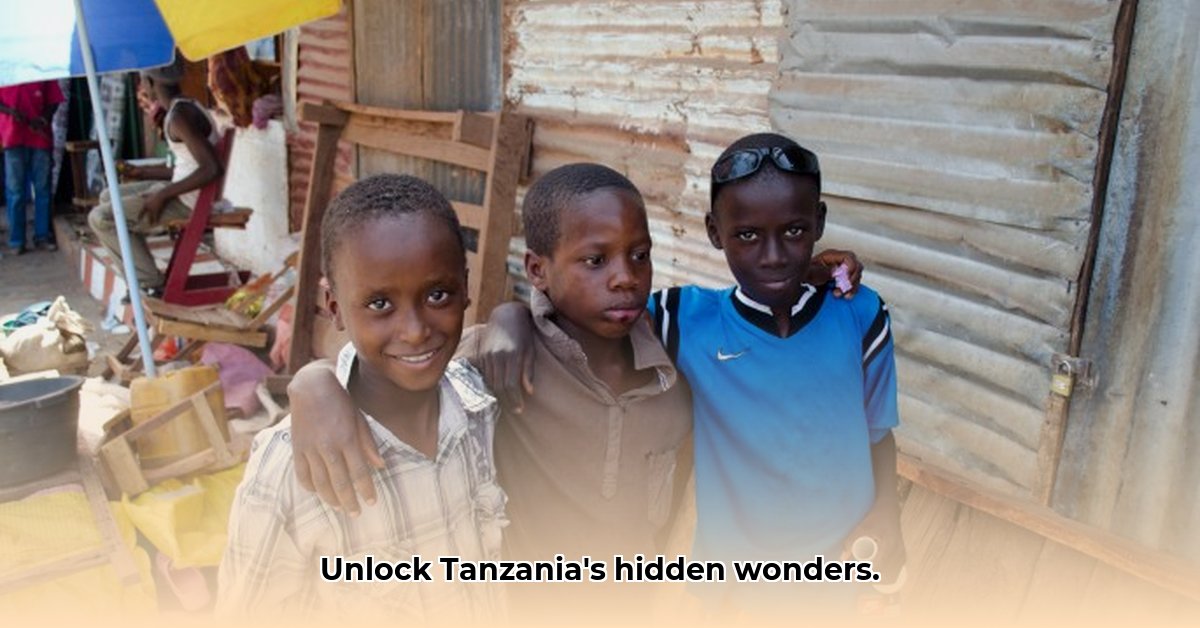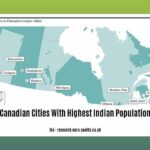Imagine Mount Kilimanjaro, a snow-capped giant, presiding over vast plains teeming with wildlife. That’s Tanzania. From the depths of Lake Tanganyika to the Indian Ocean shores, this East African nation offers a breathtaking mosaic of landscapes. We’ll explore its geography – mountains, valleys, lakes, and coast – and see how it shapes Tanzanian life, from cuisine to the booming tourism industry. Prepare for an adventure as we uncover the uniqueness of this nation and discover the profound role its geography plays in its story, from its past to future possibilities.
Tanzania on the Map of Africa: A Geographic Journey
Tanzania, nestled in East Africa, embodies a land of incredible contrasts. Envision soaring, snow-capped Mount Kilimanjaro, the continent’s highest peak, juxtaposed against the shimmering turquoise waters of the Indian Ocean. That’s Tanzania: a tapestry of diverse landscapes that has shaped its history, culture, and economy. Let’s embark on a geographic adventure to discover the wonders of this nation and Tanzanian topography.
The Great Rift Valley: A Defining Geological Feature
Picture a massive gash in the earth’s surface—that’s the East African Rift Valley, a defining feature of Tanzania’s geography. Snaking across the landscape, it creates dramatic valleys, towering escarpments, and some of Africa’s deepest lakes. Lake Tanganyika, for example, is a giant, holding an astonishing amount of the world’s freshwater. Think of it as a massive, sparkling jewel nestled in Africa’s heart. This geological feature profoundly impacts the land, shaping agriculture, influencing settlement patterns, and playing a role in the region’s biodiversity. Fertile soils within the valley benefit farmers, while elevation changes create distinct microclimates and varied ecological niches. The valley is also a tectonically active area and subject to earthquakes and volcanic activity.
Coastal Plains and Inland Plateaus: A Study in Contrasts
Along the Indian Ocean coastline, Tanzania features fertile coastal plains—ideal for agriculture, providing sustenance, and facilitating global trade. Moving inland, plateaus rise, leading to elevated highlands. This transition results in diverse ecosystems, each supporting different agricultural practices and unique flora and fauna. Stark differences between these areas—humid coastal regions to cooler, drier plateaus—create a rich tapestry of habitats and varied plant species. The coastal plain is characterized by mangrove forests, sandy beaches, and coral reefs, while the inland plateaus are dominated by grasslands, woodlands and scattered acacia trees.
Highlands and Mountains: Giants of the Tanzanian Landscape
The highlands and mountains of Tanzania are awe-inspiring. Mount Kilimanjaro reigns supreme, a snow-capped volcano attracting climbers and adventure-seekers. Mount Meru, another peak, shouldn’t be overlooked. These mountains aren’t just visually stunning; they are the lifeblood of rivers, shaping water flow and influencing water availability. Snowmelt from Kilimanjaro and Meru feeds rivers and streams that irrigate farmland, sustain ecosystems, and are vital for the country’s water supply. Climate change threatens this delicate balance, making the potential for reduced glacial melt a looming issue requiring careful water resource management and conservation strategies.
Lakes and Rivers: Lifeblood of Tanzania
Tanzania is crisscrossed by a network of lakes and rivers, each playing a role in the nation’s ecology and economy. Lake Victoria, shared with Kenya and Uganda, is one of the world’s largest lakes. The Rufiji and Great Ruaha rivers, along with tributaries, support farmlands and flora and fauna. These waterways offer opportunities for fishing, irrigation, and transportation, but they also face threats. Climate change poses a risk, with the potential for increased droughts and floods, making water management crucial. Responsible water management and conservation efforts are essential for the country’s long-term sustainability.
Political Geography: Borders, Regions, and Administration
Tanzania shares borders with eight neighboring countries: Kenya, Uganda, Rwanda, Burundi, Democratic Republic of the Congo, Zambia, Malawi, and Mozambique. This proximity fosters cooperation and competition for resources, necessitating border management. The country also possesses maritime boundaries with Comoros and Seychelles. Internally, Tanzania is divided into 31 regions, each with its unique character and challenges. This administrative division impacts local governance, resource allocation, and the political landscape. The interplay between national policies and regional needs requires strategic and sensitive decision-making. Each region is further subdivided into districts, which are the primary units of local government
Geography’s Impact: Shaping Tanzania’s Destiny
Tanzania’s geography has shaped its history and influences its future. Fertile soils are the foundation of its agricultural sector. The coastal location facilitates trade and tourism, offering access to global markets and attracting visitors. This same geography also presents challenges. The region is susceptible to droughts and floods, making agriculture vulnerable. The country also possesses natural resources, including diamonds, gold, tanzanite and natural gas, which offer economic potential but also raise concerns about environmental protection and sustainable development. Striking a balance between economic growth and environmental responsibility is critical.
Actionable Steps Towards a Sustainable Future
To ensure a sustainable future, Tanzania requires a multi-pronged approach involving careful planning that accounts for environmental factors alongside economic development.
| Stakeholder | Short-Term Actions | Long-Term Goals |
|---|---|---|
| Government | Invest in infrastructure, prioritizing rural areas; improve access to education and healthcare. Implement policies to reduce deforestation. | Implement comprehensive environmental protection policies; diversify the economy beyond natural resources; invest in climate resilience. |
| Tourism Sector | Promote sustainable tourism practices, highlight eco-tourism opportunities; improve infrastructure in key tourist areas. Create awareness for responsible tourism. | Develop high-quality tourist experiences while minimizing impact on the local environment; create jobs for local communities. |
| Agricultural Sector | Improve irrigation techniques; introduce drought-resistant crops; invest in soil health. Provide training in modern, sustainable farming techniques. | Develop value chains to increase farmers’ incomes; promote sustainable agricultural practices; improve access to markets. |
| Mining and Resource Sector | Implement stringent environmental standards; prioritize responsible mining practices; invest in worker safety. Ensure transparency in mining contracts and revenue management. | Develop value-added processing technologies; diversify exploration efforts; ensure fair distribution of mining profits, including investing in education and healthcare. |
Tanzania’s geographical diversity is both a gift and a challenge. By embracing sustainable practices and carefully managing its resources, Tanzania can unlock its potential and build a prosperous future. Further research is needed to pinpoint the precise effects of climate change and to develop mitigation and adaptation strategies for future generations.
How Tanzania’s Geography Impacts its Mining Industry Development
Key Takeaways:
- Tanzania’s diverse geography influences mineral distribution and mining operations.
- The updated geological map offers potential for resource exploration but presents challenges in data accessibility and interpretation.
- Successful mining hinges on responsible practices that balance economic benefits with environmental protection.
- Collaboration between the government, mining companies, and researchers is crucial for sustainable development and mineral wealth.
Tanzania’s Varied Terrain: A Miner’s Playground
Let’s journey through Tanzania’s captivating landscape. Imagine the Great Rift Valley, a geological feature exposing mineral-rich rock layers. This landscape is a treasure trove for miners. Gold, diamonds, and other resources are often found in association with these geological structures. The Rift Valley’s complex geology creates challenges. Accessing these deposits can be difficult, impacting mining operations.
Coastal Riches and Inland Challenges
Shifting gears, we move to Tanzania’s coastline. This geographical feature presents opportunities and challenges for mining. Coastal proximity facilitates exporting mined resources, reducing transportation costs. Conversely, coastal regions are often densely populated and ecologically sensitive, requiring consideration of environmental impacts. Inland, the highlands and mountains present obstacles. Difficult terrain and remote locations increase operational costs. Transporting heavy machinery and extracted minerals across rugged landscapes is a logistical hurdle that significantly impacts how Tanzania’s geography impacts its mining industry development.
The Updated Geological Map: A Tool for Exploration
The revamped geological map of Tanzania offers a detailed picture of mineral deposits, streamlining exploration and development. But this map depends on several factors. First, access to the map’s data and the expertise needed to interpret it are crucial for geological surveys. Second, ensuring the data’s accuracy and reliability across the vast country is essential. Finally, integrating this information into existing regulations and environmental protection measures is paramount for environmental sustainability. Without these considerations, the map’s potential remains unrealized. The government should invest in training programs to equip local geologists and mining engineers with the skills necessary to utilize the updated map effectively.
Navigating the Regulatory Landscape
Tanzania’s mining industry operates within a regulatory environment. Licensing procedures, environmental regulations, and community engagement guidelines play an important role in mineral governance. The updated geological map should ideally improve transparency and efficiency in the licensing process, enabling the government to make informed decisions about resource allocation and environmental protection. Compliance with environmental regulations is crucial to mitigate the negative impacts of mining on ecosystems and local communities.
Balancing Economic Benefits With Environmental Protection
Mining can bring significant economic benefits to Tanzania, including job creation, infrastructure development, and revenue generation. However, it’s crucial to prioritize environmental protection and ensure that mining activities are conducted responsibly. This includes implementing best practices for waste management, minimizing water usage, reducing greenhouse gas emissions, and restoring mined areas. Collaboration between mining companies, government agencies, and local communities is essential to ensure that mining operations are sustainable and benefit all stakeholders.















